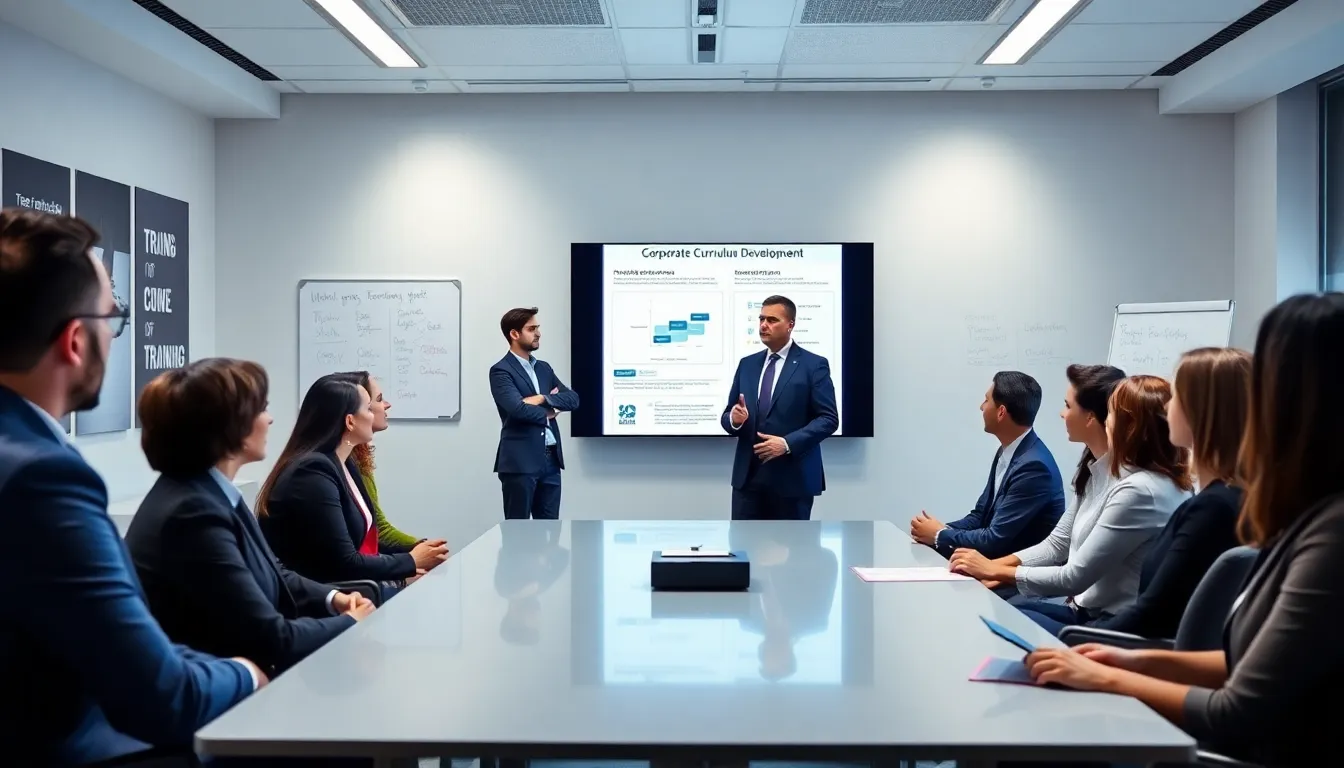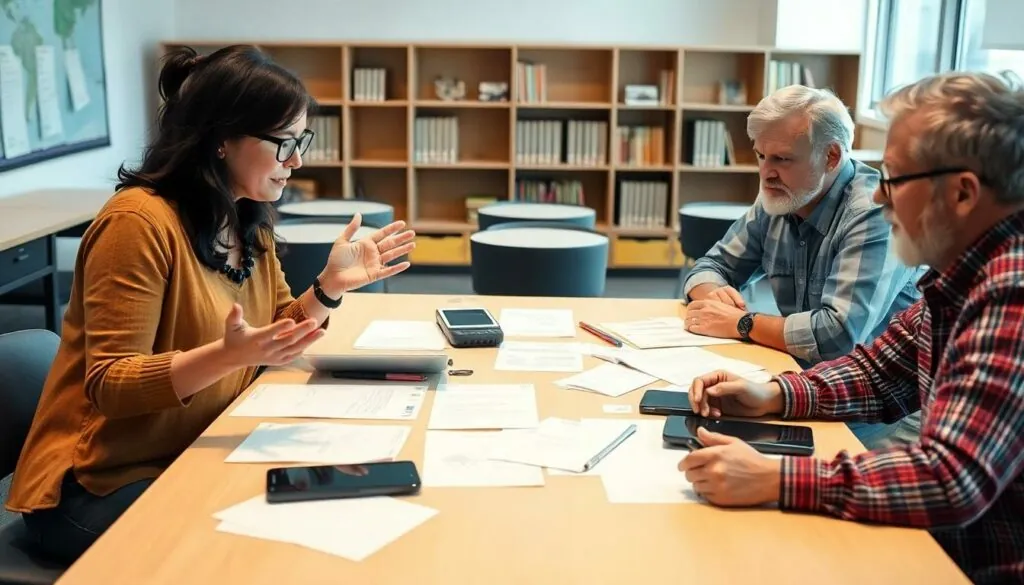Table of Contents
ToggleCurriculum development might sound like a fancy term that only education nerds toss around at dinner parties, but it’s the backbone of effective teaching and learning. Imagine trying to build a house without a blueprint—chaos, right? That’s exactly what happens without a solid curriculum.
Overview of Curriculum Development Process
Curriculum development involves several critical stages to create an effective educational framework. First, needs assessment identifies the specific educational objectives and learner requirements. It also examines the current curriculum’s strengths and weaknesses.
Next, clear goals and objectives are defined based on the assessment outcomes. These goals guide the content selection and instructional strategies. Engaging stakeholders, including educators, students, and community members, can enrich this process, ensuring diverse perspectives influence curriculum decisions.
Following goal setting, educators focus on content development. This stage includes choosing materials, resources, and activities that align with established objectives. Utilizing various instructional methods enhances student engagement and learning.
After content development, implementation occurs. This stage involves teacher training and classroom execution. Systematic support during implementation fosters better adaptation and integration of the new curriculum.
Lastly, evaluation and revision occur. Continuous assessment of curriculum effectiveness helps identify areas needing improvement. Gathering feedback from students and instructors can inform necessary adjustments, ensuring that the curriculum remains relevant and effective over time.
The curriculum development process is dynamic and cyclical, promoting ongoing enhancement of educational practices. Each phase interrelates and supports the overarching goal of fostering meaningful learning experiences.
Key Stages in the Curriculum Development Process
Understanding the key stages in the curriculum development process streamlines educational outcomes. Each stage plays a vital role in creating effective learning experiences.
Needs Assessment
Identifying learner requirements marks the first step in curriculum development. It entails collecting data through surveys, interviews, and focus groups. Current strengths and weaknesses of existing curricula also undergo evaluation. Engaging stakeholders such as teachers, parents, and students enhances the needs assessment. This collaborative approach ensures a comprehensive understanding of learning gaps. By defining clear educational objectives, developers establish a solid foundation for the curriculum.
Curriculum Design
Curriculum design focuses on organizing content that aligns with identified goals. Developers outline instructional strategies that effectively convey knowledge and skills. Choosing appropriate resources and materials is essential for successful implementation. Collaboration with educators ensures the curriculum meets classroom realities. Drafting assessment methods reinforces the alignment between teaching and learning objectives. Cohesion between various elements of the curriculum emerges as a priority during the design phase.
Implementation
Implementation involves executing the curriculum within educational settings. Teacher training plays a critical role in preparing instructors to deliver new content. Resources and materials must be accessible to support classroom activities. Schools establish a timeline to facilitate a smooth rollout. Monitoring the implementation process helps identify early challenges and successes. Collaborative support among educators enhances the overall effectiveness of the curriculum in practice.
Evaluation and Revision
Evaluation and revision assess the curriculum’s effectiveness over time. Collecting feedback from teachers and students provides insights for improvement. Regular assessment against established objectives ensures relevancy. Analyzing student performance data informs necessary adjustments. Stakeholder involvement during this stage fosters a sense of ownership in the curriculum. Continuous revision maintains alignment with evolving educational standards and learner needs.
Stakeholders in the Curriculum Development Process
Engaging various stakeholders is essential in the curriculum development process. Their involvement ensures that the curriculum is relevant and effective.
Educators
Educators play a crucial role in shaping the curriculum. They provide insights based on classroom experiences and understand student needs firsthand. Their feedback helps identify effective instructional strategies and content relevance. Collaboration among teachers fosters innovative approaches that address diverse learning styles. Professional development opportunities enhance educators’ skills, allowing them to contribute more effectively to curriculum design. Engaging educators ensures that the curriculum remains practical and grounded in real-world applications.
Administration
Administration provides the necessary support and resources for curriculum development. School leaders establish clear goals aligned with educational standards. Their role involves facilitating communication among stakeholders and overseeing the implementation process. Administrators assess budgetary constraints and available resources, ensuring the curriculum is sustainable. They also prioritize training initiatives that equip educators with essential skills. Strong leadership from administration is vital in promoting a culture of continuous improvement within the curriculum.
Community Involvement
Community involvement enriches the curriculum development process. Engaging parents and community members offers diverse perspectives that reflect local values and needs. Collaboration with local organizations can provide additional resources and support for educational programs. Outreach initiatives help gather feedback from families, ensuring the curriculum addresses student and community aspirations. Establishing partnerships with businesses and non-profits enhances real-world relevance in learning experiences. Community engagement fosters a sense of ownership and commitment toward the educational process.
Challenges in the Curriculum Development Process
Several challenges arise during the curriculum development process, impacting its effectiveness and implementation.
Resource Allocation
Resource allocation poses a significant challenge in curriculum development. Educational institutions often face budget constraints limiting the availability of materials and technology needed for new curricula. Without sufficient funds, implementing innovative instructional strategies becomes difficult. Personnel shortages can further hinder efforts to develop and execute curriculum effectively. It’s crucial to prioritize resource distribution to areas that most directly influence student learning outcomes. Schools may need to seek partnerships with local businesses or organizations to supplement resources. Engaging stakeholders in discussions about resource needs can also help identify creative solutions.
Resistance to Change
Resistance to change frequently occurs during the curriculum development process. Teachers accustomed to their existing methods may hesitate to adopt new strategies or materials. This reluctance can stem from fear of inadequate training or unfamiliarity with new technologies. To overcome this challenge, it’s essential to provide comprehensive professional development that supports teachers through the transition. Collaborative environments foster open dialogue, encouraging educators to express concerns and suggestions. Demonstrating the benefits of the new curriculum can also aid acceptance, emphasizing how it improves student engagement and outcomes. Finally, involving teachers in the curricular decision-making process cultivates ownership and willingness to adapt.
Conclusion
The curriculum development process is vital for creating effective educational experiences. By engaging stakeholders and focusing on continuous evaluation, it ensures that learning remains relevant and aligned with student needs. The collaborative efforts of educators, administrators, and the community play a crucial role in shaping a curriculum that addresses real-world challenges. As education evolves, so too must the curriculum, adapting to new standards and learner requirements. Embracing this dynamic process fosters an environment where meaningful learning can thrive, ultimately leading to improved educational outcomes.








